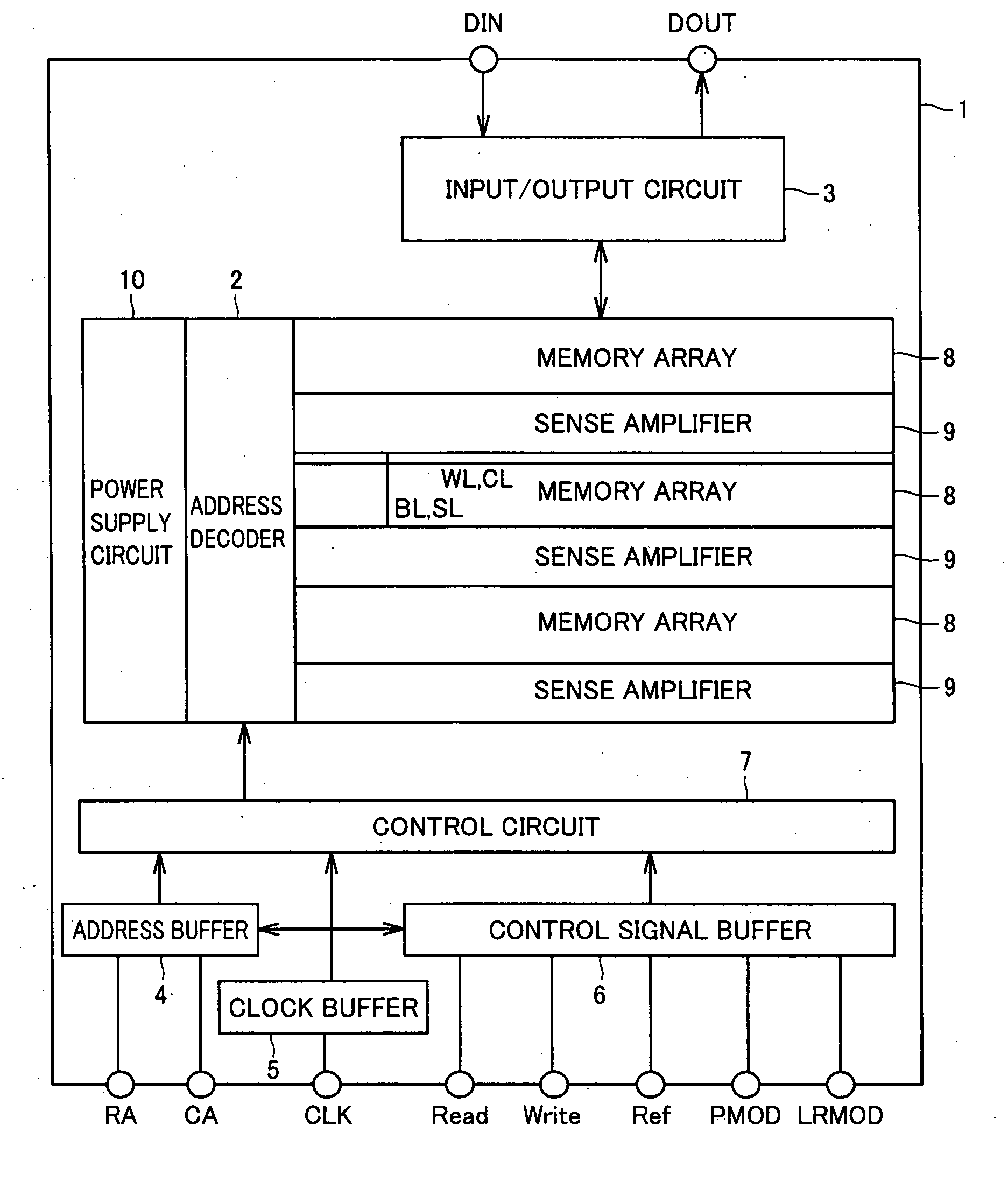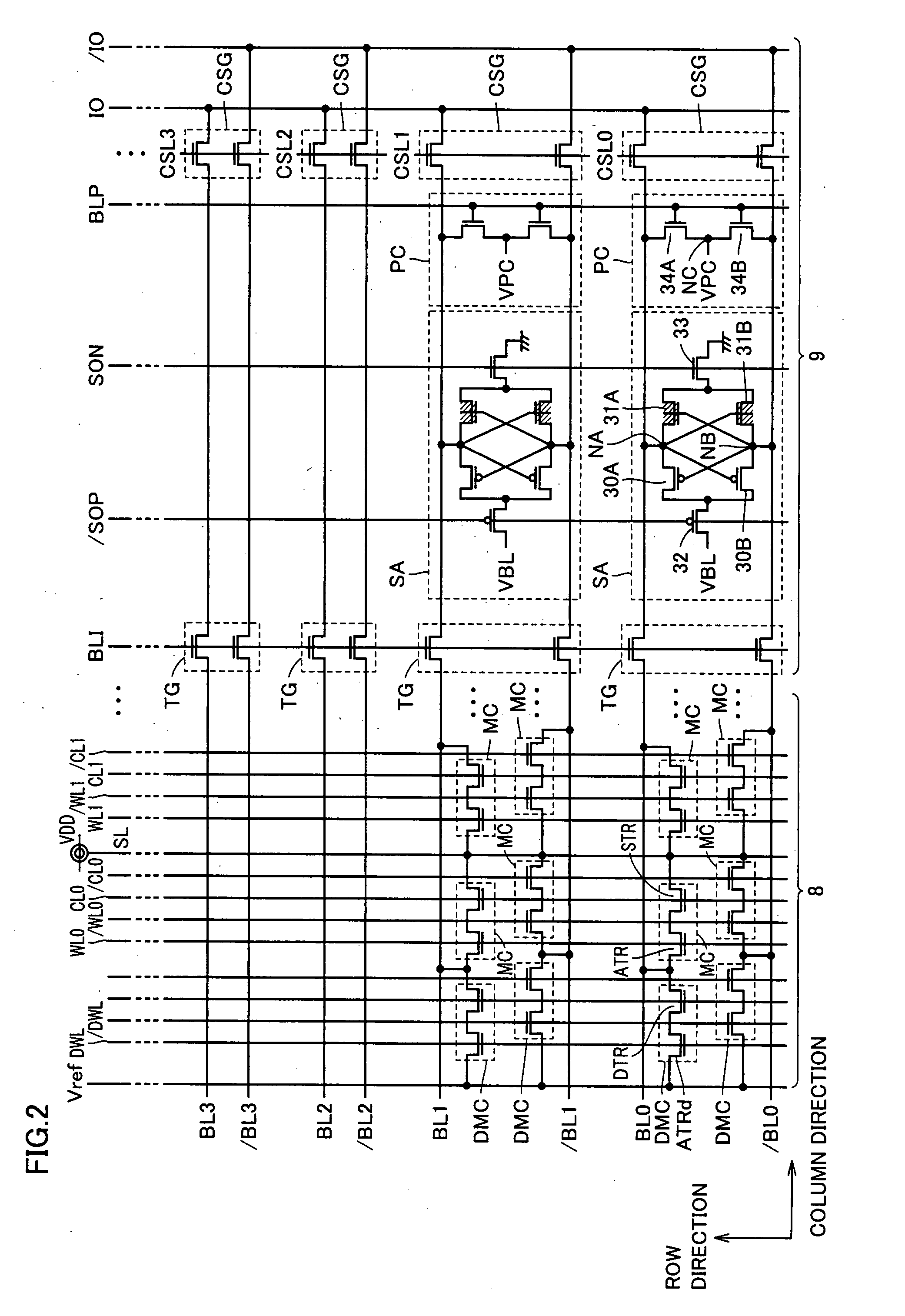Semiconductor memory device
a technology of memory devices and semiconductors, applied in semiconductor devices, digital storage, instruments, etc., can solve the problems of degrading reaching the scaling limitation, etc., and achieve the effect of retaining the retaining capacity of stored data in data readou
- Summary
- Abstract
- Description
- Claims
- Application Information
AI Technical Summary
Benefits of technology
Problems solved by technology
Method used
Image
Examples
first embodiment
[0028]Referring to FIG. 1, a semiconductor memory device 1 according to a first embodiment of the present invention includes an address decoder 2, an input / output circuit 3, an address buffer 4, a clock buffer 5, a control signal buffer 6, a control circuit 7, a memory array 8, a sense amplifier 9, and a power supply circuit 10.
[0029]Address decoder 2 is configured including a row address decoder (not shown) and a column address decoder (not shown). Address decoder 2 responds to a control command, based on a row address signal RA and a column address signal CA applied to a terminal of semiconductor memory device 1 from an external source, to selectively drive a plurality of word lines WL and charge lines CL arranged along the row direction of memory array 8, as well as a plurality of bit lines BL and source lines SL arranged along the column direction of memory array 8.
[0030]Sense amplifier 9 includes a sense amplifier circuit corresponding to each bit line pair. Two bit lines BL ad...
second embodiment
[0134]The schematic diagram of a semiconductor memory device according to a second embodiment of the present invention is similar to that of the semiconductor memory device of the first embodiment shown in FIGS. 1 and 2. Therefore, detailed description thereof will not be repeated. In the second embodiment of the present invention, the circuit configuration of the sense amplifier is arbitrary. A circuit configuration other than that of sense amplifier 9 shown in FIG. 2 may be employed. In the second embodiment of the present invention, channel formation region 23 corresponds to “channel formation region”. Impurity diffusion region 24 and impurity diffusion region 22 correspond to “first impurity diffusion region” and “second impurity diffusion region”, respectively.
[0135]The second embodiment of the present invention will be described based on a data retaining operation in a state where data “0” is stored in memory cell MC. i.e. the amount of accumulated holes at storage node SN is ...
PUM
 Login to View More
Login to View More Abstract
Description
Claims
Application Information
 Login to View More
Login to View More - R&D
- Intellectual Property
- Life Sciences
- Materials
- Tech Scout
- Unparalleled Data Quality
- Higher Quality Content
- 60% Fewer Hallucinations
Browse by: Latest US Patents, China's latest patents, Technical Efficacy Thesaurus, Application Domain, Technology Topic, Popular Technical Reports.
© 2025 PatSnap. All rights reserved.Legal|Privacy policy|Modern Slavery Act Transparency Statement|Sitemap|About US| Contact US: help@patsnap.com



